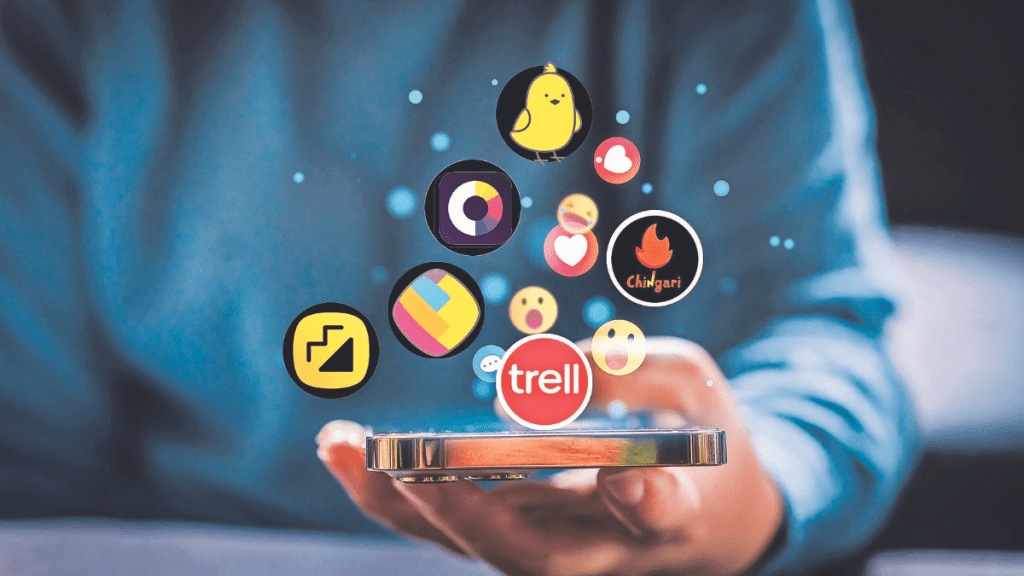What do Koo, Chingari, Trell, Share Chat, and such social media platforms have in common? All Made In India, these apps rose to prominence riding on the Atmanirbhar and vocal for local calls by the Indian government, not to forget the often topsy-turvy relationship the Centre has had with more than one international social media platform. However, beyond the indigenous-alternative factor, have these apps been able to level up? Reports suggest otherwise.
From claiming to be the world’s second-largest micro-blog to massive lay-offs and reports of an impending acquisition, Koo’s journey has been anything but smooth.
This Twitter alternative was launched in 2020, amid the Centre’s push for vocal for local, offering services in over 10 languages. It achieved a high as it stood second in the Indian government’s AatmaNirbhar Bharat App innovation challenge. However, it received a major boost the following year as the ruling Bharatiya Janata Party (BJP) got into a standoff with Twitter (now X) after it refused to remove certain posts critical of the government led by Prime Minister Narendra Modi.
Several ministers ditched Twitter and joined Koo, and so did some celebrities. Bollywood actor Kangana Ranaut, now a BJP MP, too, endorsed the app after her account was suspended by X in 2021. “Your time is up @Twitter time to shift to #kooapp will inform everyone soon about my account details there. Absolutely thrilled to experience homegrown #kooapp,” she had posted then. And within a year, Koo grew to 4.7 million users, founder Mayank Bidawatka said in a 2021 interview.
The platform had a similar experience in Nigeria, which suspended X in June 2021 after it deleted a post by president Muhammadu Buhari. Koo swooped in and onboarded Buhari and several other Nigerian government officials. Similarly, in Brazil, Koo’s funny-sounding name played a role in its feat of getting one million downloads within two days of launching in 2022.
By July 2022, it achieved a peak of over 9 million monthly active users, as per reports.
However, metrics now suggest that the platform has seen a major dip in the number of active users, from 7.2 million in June 2023 to just 2.7 million in February 2024. Not only that, it has reportedly laid off more than 80% of its workforce since 2022, with its headcount now pegged at just 60.
While the funding winter has had an impact, one cannot ignore other factors.
Anyone who has used both X and Koo would know that the latter feels like a copycat of the former but in a different colour. The former blue of Twitter was replaced by yellow and the flying blue bird by a sitting yellow one. The user interface is also similar, leaving very little reason to join Koo for X.
Also, having been endorsed by several top BJP leaders and celebrities aligned with it, Koo has found it difficult to dissociate itself from being seen as a right-leaning platform, which isn’t a good scenario for any social media platform for scale-up.
In the course of building its user base, Koo launched a host of features such as the Koo Coins and premium features, but it has failed to offer any competitive advantage over X.
That is why, when the Modi government’s relationship with X improved, the ministers, too, got more active there. Also, when Elon Musk assumed leadership, it unblocked the accounts of several of those earlier suspended, which also hurt Koo’s user base.
Similar is the case with India’s TikTok clones. While the 2020 ban on TikTok, along with several other Chinese apps, fuelled the rise of several homegrown apps, they haven’t been able to match up to TikTok, for whom India was the biggest market at the time of its ban.
Among the host of apps that ran to fill the gap included ShareChat’s Moj, MX Takatak, Chingari, and Roposo, among others. While reports suggest they experienced some success in tier-2 cities and smaller towns, they were far from matching up to the Chinese giant.
It all boils down to the offerings and just being a clone hardly offers any edge. Just take the case of Threads, which was ‘inspired’ by Twitter. Despite being a Meta product and having a banging launch last year, it swiftly witnessed a fall in active user numbers. At an internal town hall last year, CEO Mark Zuckerberg concurred that while the retention on the app was “better than what the executives had expected, it was not perfect”, reports suggest. It’s safe to say that being a clone of something can get you started but it’s a tough path ahead to keep going.

